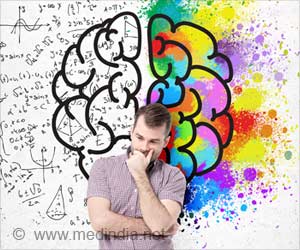- AI and neuroimaging reveal brain regions linked to psychosis
- Anterior insula and ventral striatum play key roles in attention and perception
- Potential for targeted therapies to mitigate psychosis onset
Researchers have figured out more about why some people experience things that aren’t real, like seeing or hearing things that aren’t there. This helps us understand conditions like schizophrenia and bipolar disorder better. It’s like solving a puzzle to help find better ways to help people with these conditions feel better (1✔ ✔Trusted Source
Artificial intelligence-assisted psychosis risk screening in adolescents: Practices and challenges
).
When people have severe mental illnesses like schizophrenia, they might have trouble knowing what’s real and what’s not. Scientists have been trying to understand why this happens for a long time. But it’s been hard because many people with these conditions take medications that can change how their brains work.
Over 900 individuals studied; AI identifies crucial brain areas for psychosis onset. #mentalhealth #ai #medindia’
To make things clearer, scientists used special machines and artificial intelligence (AI) to take pictures of people’s brains while they were doing different tasks. They focused on people with a rare condition called 22q11.2 deletion syndrome, which makes them more likely to have these mental health issues.
Deciphering the Brain’s Role in Psychosis
By using AI, scientists could see patterns in the brain pictures that showed up in people with psychosis (a term for when people lose touch with reality). They found that two parts of the brain, the anterior insula and ventral striatum, were especially important in causing these experiences.
Think of the brain like a control center that decides what’s important for us to pay attention to. The anterior insula helps filter out what’s not important, like background noise. Meanwhile, the ventral striatum helps us decide what’s really important or interesting. When these parts of the brain don’t work right, people might start seeing or believing things that aren’t true.
Targeted Therapies: A New Frontier in Mental Health Treatment
Understanding how these parts of the brain work when people have psychosis is a big step forward. It can help scientists come up with new ways to treat these conditions. Maybe one day, they’ll be able to use things like special brain treatments or medicines that target these specific areas to help people feel better.
Overall, this discovery is like a flashlight in the dark, helping us see a little more clearly into the mysteries of mental illness. And as we keep learning more, we’re getting closer to finding better ways to help people who are struggling with these challenges.
Advertisement
Reference:
- Artificial intelligence-assisted psychosis risk screening in adolescents: Practices and challenges – (https://www.ncbi.nlm.nih.gov/pmc/articles/PMC9641379/)
Source-Medindia



